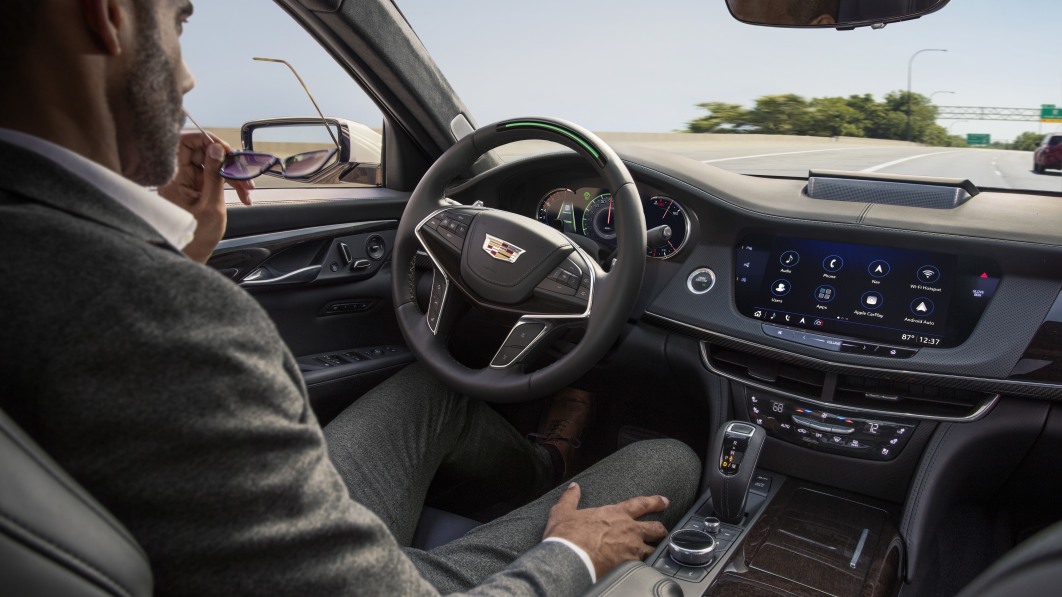AAA: Driver monitoring systems need significant improvements

More and more cars on the road feature advanced driver assist systems that provide SAE Level 2-type semi-autonomy (in which the car can handle throttle, brakes and steering, but still requires human supervision). And it’s clear, particularly from some highly irresponsible Tesla owners, that better driver monitoring is required to prevent drivers from abusing the system and operating their cars dangerously. Many of these cars simply monitor small steering wheel inputs for driver engagement, while others, such as GM’s Super Cruise, Ford’s BlueCruise and Subaru’s DriverFocus use infrared cameras to watch the driver’s head and eyes. To find out how effective these systems are, AAA rounded up four vehicles, two of each type of system, and tested them. The organization found that the camera systems are far superior to steering-wheel systems, but even camera systems could use improvement. And the biggest issue AAA found was that all systems could be fooled for dangerous amounts of time.
The four cars AAA used were a 2021 Cadillac Escalade with Super Cruise, a 2021 Subaru Forester with EyeSight and DriverFocus, a 2020 Tesla Model 3 with Autopilot and a 2020 Hyundai Santa Fe with Highway Driving Assist. The first two featured camera monitoring, while the latter two had steering wheel monitoring. And with normal operation, when the driver wasn’t actively trying to thwart the monitoring system, the camera system was far faster at recognizing when the driver wasn’t paying attention. The time between looking away (either just glancing down or turning one’s head down) with hands off the wheel and the system alerting the driver was under 10 seconds on average for both the Cadillac and the Subaru. AAA also found that the effectiveness wasn’t reduced at night, likely because the cameras were infrared. As for the steering wheel systems, both the Hyundai and Tesla averaged nearly a minute between the driver being distracted with hands off the wheel and the car setting off an alert. At the 65 mph speed limit on the toll road where AAA was testing, that’s nearly a mile of road without the driver paying attention. And while the camera system performed much better, the organization noted that the alerts should come even faster than the close to 10 seconds measured.
While substantially better than steering-wheel-based monitoring, the camera-based system was still susceptible to being fooled. To throw off the systems, AAA’s testers didn’t use any types of tools or external materials to throw them off, just their persons. So for example, with the steering wheel systems, the tester could just give a quick wheel wiggle, and for the camera systems, the tester would try to adjust their head and eyes to trick it while still doing other things. In these situations, time between starting distracted driving and when an alert came up increased drastically. With camera monitoring, time to alerting the driver increased to more than two minutes. The steering wheel monitoring systems could be fooled for an average of around 5.5 minutes. That’s 2 miles of distracted driving for camera monitoring and 6 miles for steering wheel monitoring, both of which are obviously extremely dangerous stretches of inattention. AAA further noted that owners of these vehicles could probably fool the systems even longer because they would be more familiar with them.
There’s one other major issue that AAA discovered. The testing period for the monitoring systems was 10 minutes, and in the entire time, the driver aids could be reactivated. There was never a point where, after the driver took over again, any of the cars would lock out the aids, effectively forcing the driver to remain engaged. The organization feels that it’s dangerous to allow a driver who is consistently not paying attention to continue using the system that lets them be distracted. We’re inclined to agree, certainly either a full lockout until the car has been parked, or even just a period of time in which the features are unavailable.
To sum up, monitoring systems are important when implementing these semi-autonomous advanced driver assists, and camera systems seem to be far and away the most effective. But they still need to react faster, they need to be adjusted so they aren’t fooled, and features need to be locked out to habitual abusers.
Related video:







